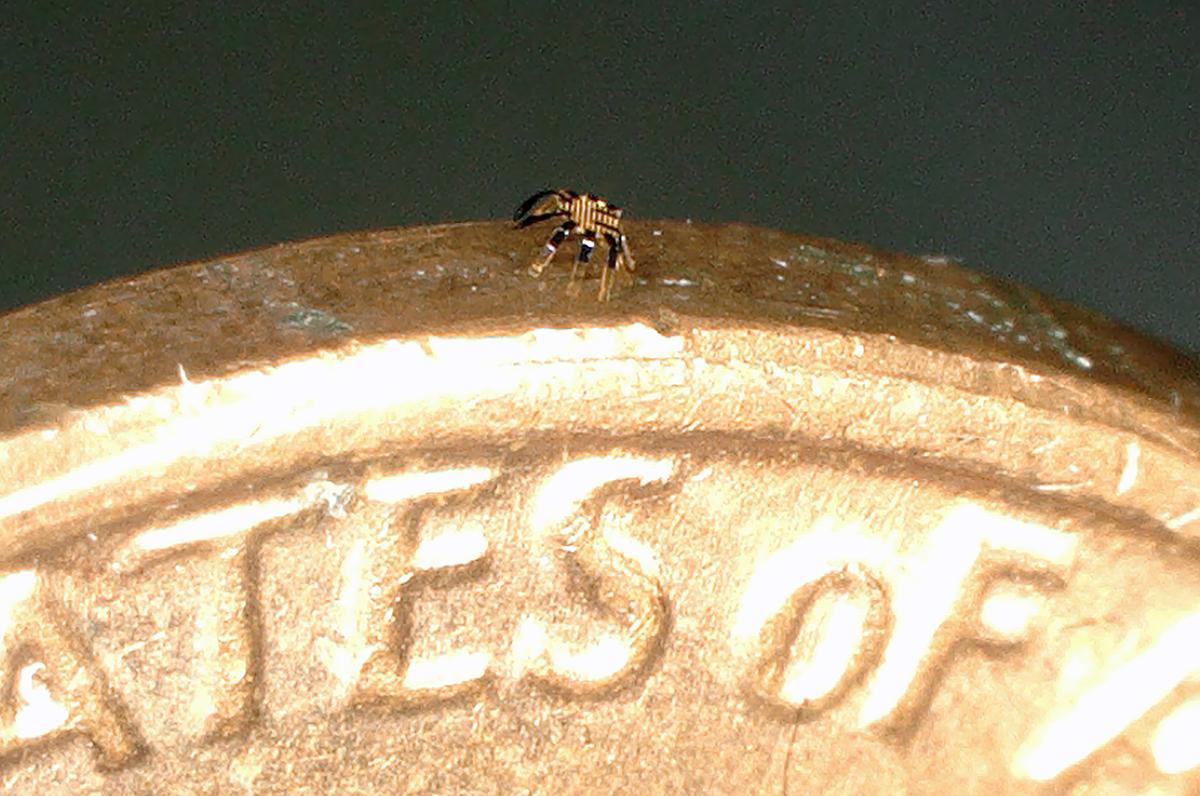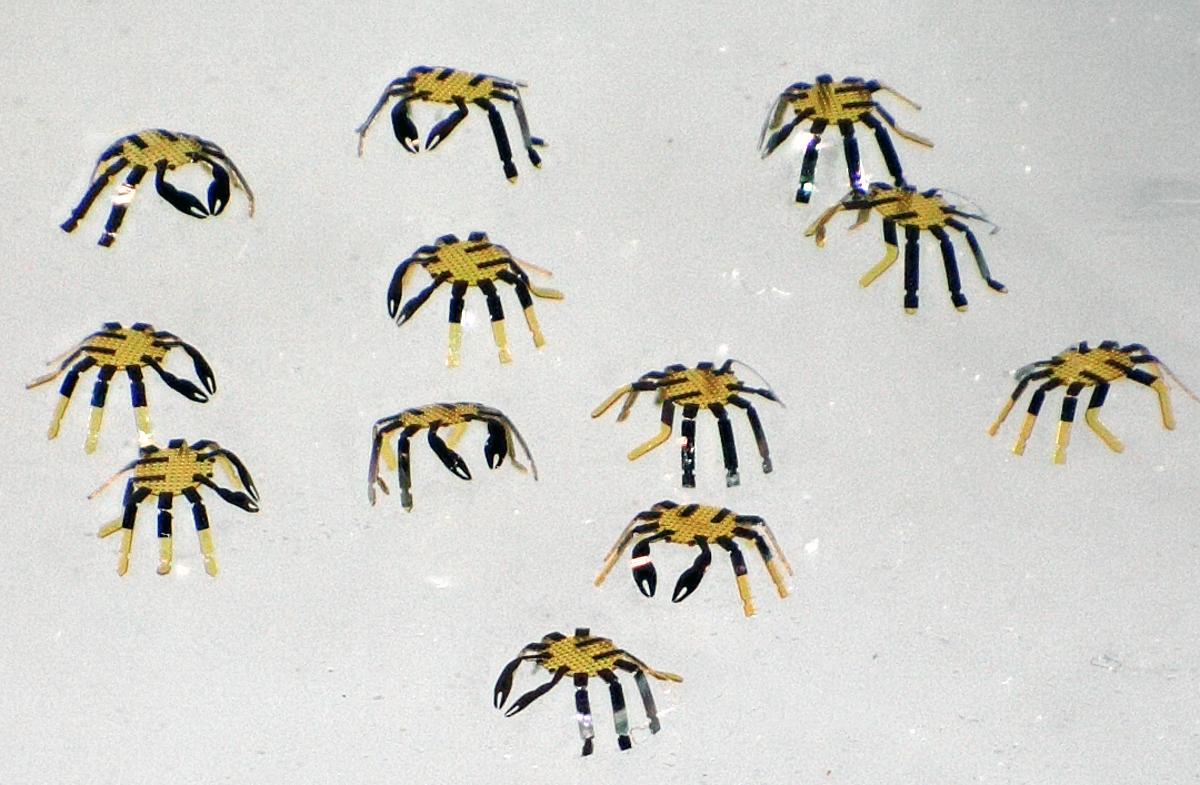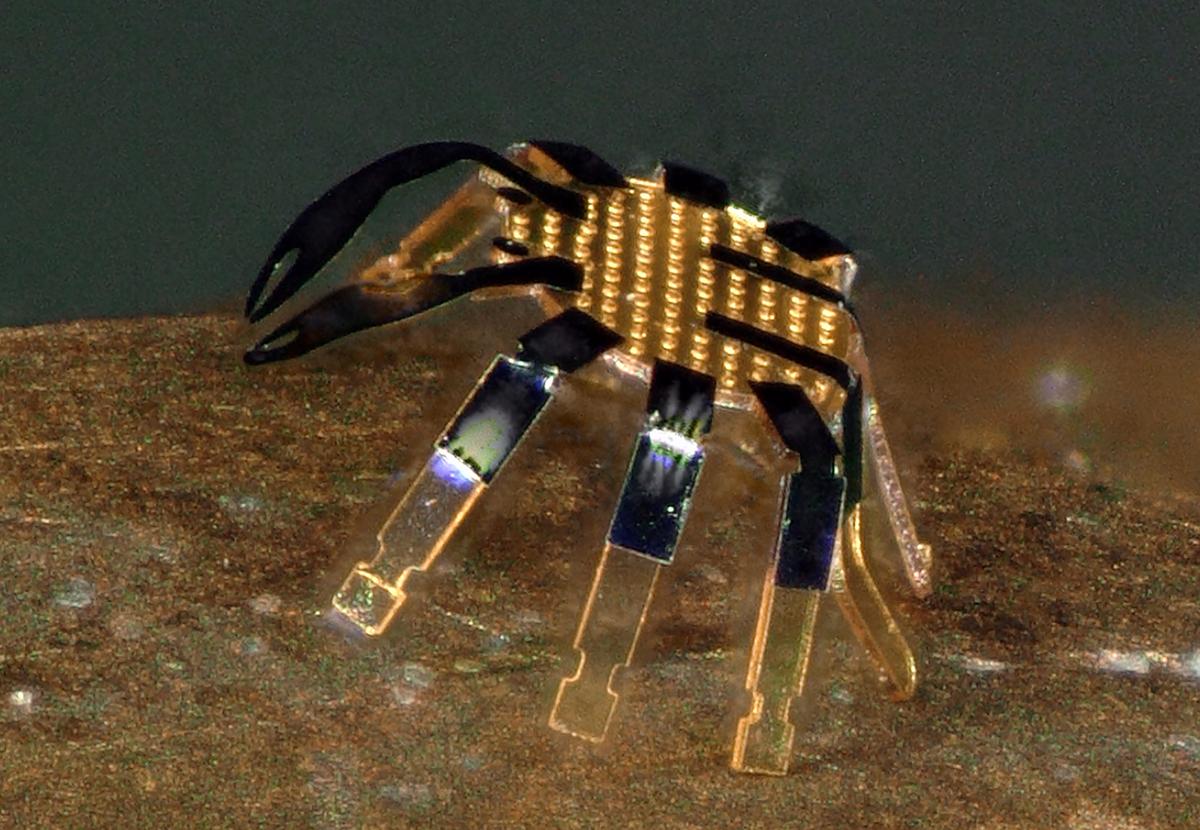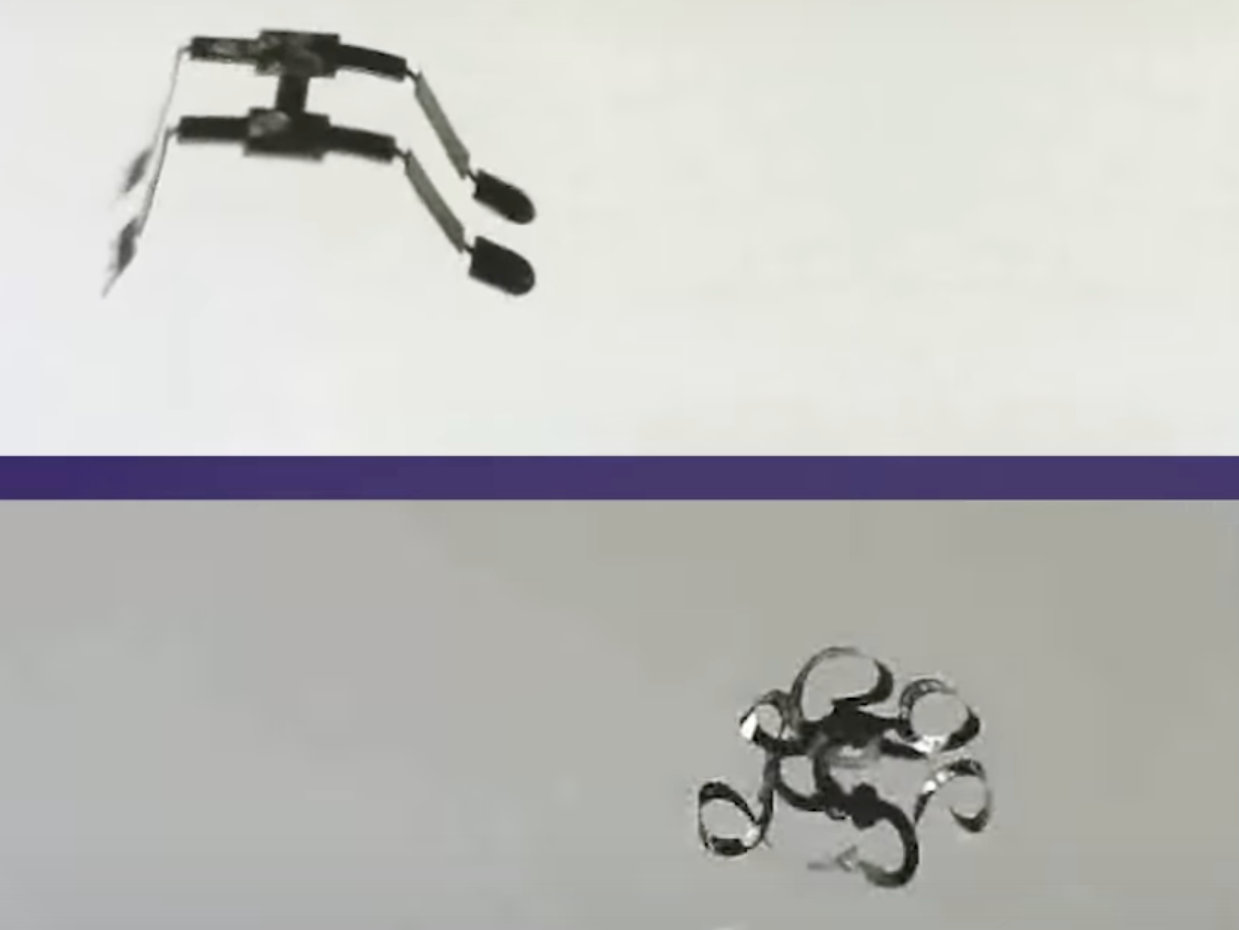Evanston, Illinois —(Map)
Scientists recently announced the world’s tiniest remote-controlled robots. Small enough to sit on the side of a penny, the robots can be controlled by a laser. The scientists say one day robots like these may be able to work in areas too small for tools.
Last week, researchers at Northwestern University revealed details on several tiny robots they have created. The tiniest is shaped like a crab and is just half a millimeter (about 1/50 of an inch) wide.

(Source: Northwestern University.)
The robots don’t have any power of their own. Instead, they can be controlled from a distance by using lasers.
The researchers say the robot is designed a bit like a 3D popup book. The basic shape for the crab is flat. The flat shape is then attached to a rubbery material that’s stretched out. When the rubbery material is allowed to relax, the robot pops up into a standing crab.

(Source: Northwestern University.)
This mixture of layers is the secret to the crab’s movement. The different layers give the material two positions that it can be in. When the stiff glass layer is softened, the rubbery layer bends the material. But when the stiff layer hardens again, it snaps back to its old position. The scientists call this “shape-memory”.
The trick to getting the stiff glass layer to soften is to warm it up with a laser. Because the robots are so tiny, their parts heat up and cool down very quickly. By warming up different parts of the robots, the scientists can make them move in different ways. The researchers say their robots can crawl, walk, turn, and even jump.

(Source: Northwestern University.)
The robots aren’t super speedy. But given their tiny size, they’re also not too slow. It takes the crabs about 20 seconds to cover 1 centimeter (26 seconds to cover half an inch).
Right now the robots aren’t all that useful. All they can do is move, and they need to be in a place where lasers can shine on them to do that. But the scientists say these robots are an important step toward creating more helpful tiny robots.
The researchers say that one day tiny robots like these might be able to work in very small spaces. It’s possible that they could build very tiny machines, or perhaps even travel inside the human body to help deal with medical problems.

(Source: Screenshot, Northwestern University.)
Using similar building methods, the scientists created a number of different robots, including ones that looked like worms, beetles, and crickets. John Rodgers, one of the scientists, says that their methods allow them to “build walking robots with almost any sizes or 3D shapes.”
😕
This map has not been loaded because of your cookie choices. To view the content, you can accept 'Non-necessary' cookies.
